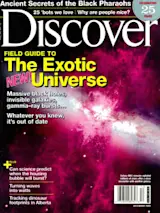A lot of the havoc wreaked by natural disasters is sheer physics. The explosive energy unleashed when a wind blowing 150 miles per hour collides with a large pane of glass or a 30-foot wave washes over houses is terrifying. But natural disasters also involve crises of information that can turn out to be as deadly as the physics. The residents of India and Sri Lanka had almost two hours to move to higher ground after seismographs first registered the quake that triggered the Indian Ocean tsunami of 2004, but because those regions lacked a warning system, tens of thousands perished. Recovery, too, is hobbled by damaged information systems. Think of the Federal Emergency Management Agency's hapless Michael Brown and how he discovered thousands of people were trapped in the New Orleans convention center: "I learned about it from the news reports," he said.
Ordinary citizens can't do much about ...














